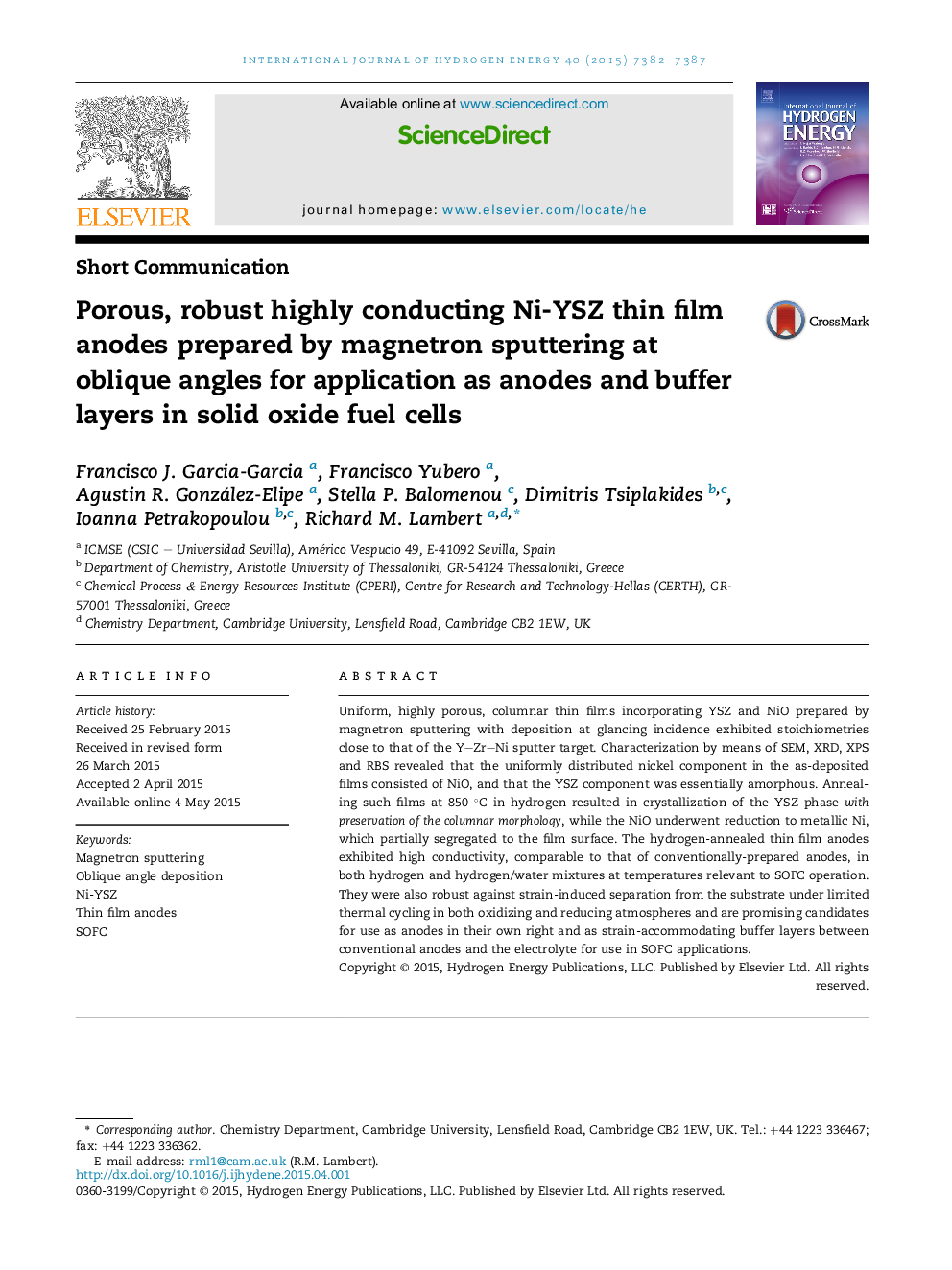| Article ID | Journal | Published Year | Pages | File Type |
|---|---|---|---|---|
| 1270989 | International Journal of Hydrogen Energy | 2015 | 6 Pages |
•Composition of sputtered YSZ/NiO thin films similar to that of conventional cermets.•Reduction gave crystalline YSZ microcolumns containing well-dispersed metallic Ni.•Large three phase boundary gave high electrical conductivity under SOFC conditions.•Anodes were robust under thermal cycling in both oxidizing and reducing atmospheres.
Uniform, highly porous, columnar thin films incorporating YSZ and NiO prepared by magnetron sputtering with deposition at glancing incidence exhibited stoichiometries close to that of the Y–Zr–Ni sputter target. Characterization by means of SEM, XRD, XPS and RBS revealed that the uniformly distributed nickel component in the as-deposited films consisted of NiO, and that the YSZ component was essentially amorphous. Annealing such films at 850 °C in hydrogen resulted in crystallization of the YSZ phase with preservation of the columnar morphology, while the NiO underwent reduction to metallic Ni, which partially segregated to the film surface. The hydrogen-annealed thin film anodes exhibited high conductivity, comparable to that of conventionally-prepared anodes, in both hydrogen and hydrogen/water mixtures at temperatures relevant to SOFC operation. They were also robust against strain-induced separation from the substrate under limited thermal cycling in both oxidizing and reducing atmospheres and are promising candidates for use as anodes in their own right and as strain-accommodating buffer layers between conventional anodes and the electrolyte for use in SOFC applications.
Graphical abstractFigure optionsDownload full-size imageDownload as PowerPoint slide
